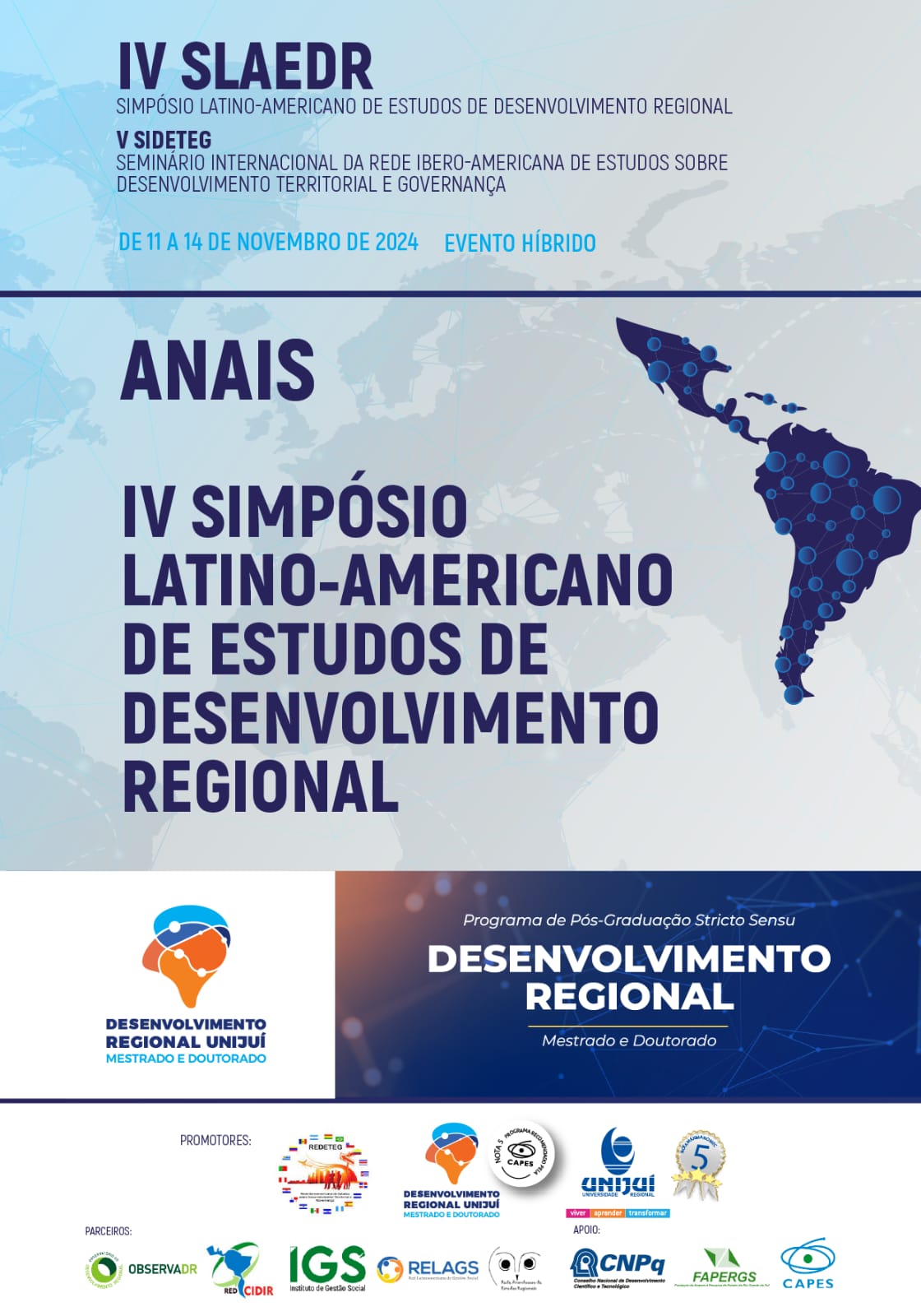Mapeamento cienciométrico de cidades amigáveis ao envelhecimento e inteligentes
tendências globais
Palavras-chave:
Cidade inteligente, Cidade amiga da pessoa idosa, Envelhecimento, Cienciometria.Referências
CHE, S. L. et al. Attitudes to ageing mediates the relationship between perception of agefriendly
city and life satisfaction among middle-aged and older people in Macao: a crosssectional study. BMC geriatrics, v. 24, n. 1, 2024.
CHIANG, Y.-C. et al. Influence of promoting an “age-friendly cities” strategy on psychological capital and social engagement based on the scenario method. Journal of aging & social policy, v. 35, n. 4, p. 463–485, 2023.
GORGOL, N. K. What is a resilient smart city? Blue–green infrastructure as a strategic feature of smart urban form: Empirical evidence with a particular focus on the Songdo IBD and Aspern Seestadt in Vienna. Sustainability, v. 16, n. 5, p. 1758, 2024.
HU, W.; WANG, S.; ZHAI, W. Human-centric vs. technology-centric approaches in a topdown smart city development regime: Evidence from 341 Chinese cities. Cities (London, England), v. 137, n. 104271, p. 104271, 2023.
HUSSAIN, A. et al. Health and emergency-care platform for the elderly and disabled people in the Smart City. The Journal of systems and software, v. 110, p. 253–263, 2015.
IVAN, L.; DIKKEN, J.; VAN HOOF, J. Unveiling the experienced age-friendliness of older people in Bucharest: A comprehensive study using the validated Romanian age-friendly cities and communities questionnaire and cluster analysis. Habitat international, v. 143, n. 102973, p. 102973, 2024.
JOHNSON, R. et al. Sustaining Chicago’s informal caregivers: An age-friendly approach. Journal of urban health: bulletin of the New York Academy of Medicine, v. 93, n. 4, p. 639–651, 2016.
KOHIJOKI, A.-M.; KOISTINEN, K. The city centre as an age-friendly shopping environment: a consumer perspective. Ageing and society, v. 42, n. 12, p. 2735–2756, 2022.
LI, L. et al. Unveiling age-friendliness in smart cities: A heterogeneity analysis perspective based on the IAHP-CRITIC-IFCE approach. Habitat international, v. 151, n. 103153, p. 103153, 2024.
MATHUNJWA, B. M. et al. A lifestyle monitoring system for older adults living independently using low-resolution smart meter data. Sensors (Basel, Switzerland), v. 24, n. 11, p. 3662, 2024.
QU, G.; SONG, Q.; FANG, T. The artistic image processing for visual healing in smart city. Scientific reports, v. 14, n. 1, p. 16846, 2024.
RUDNICKA, E. et al. The World Health Organization (WHO) approach to healthy ageing. Maturitas, v. 139, p. 6–11, 2020.
SHOINA, M. et al. The 15-minute city concept: The case study within a neighbourhood of Thessaloniki. Waste management & research: the journal of the International Solid Wastes and Public Cleansing Association, ISWA, v. 42, n. 8, p. 694–710, 2024.
STEELS, S. Key characteristics of age-friendly cities and communities: A review. Cities (London, England), v. 47, p. 45–52, 2015.
VAN HOOF, J. et al. The challenges of urban ageing: Making cities age-friendly in Europe. International journal of environmental research and public health, v. 15, n. 11, p. 2473, 2018.
VAN HOOF, J. et al. Ten questions concerning age-friendly cities and communities and the built environment. Building and environment, v. 199, n. 107922, p. 107922, 2021.
VAN HOOF, J.; DIKKEN, J. Revealing sustainable mindsets among older adults concerning the built environment: The identification of six typologies through a comprehensive survey. Building and environment, v. 256, n. 111496, p. 111496, 2024.
VAN HOOF, J.; VAN STAALDUINEN, W. H.; DIKKEN, J. A multi-year quantitative study of the experienced age-friendliness in The Hague: A tale of four personas. Social science & medicine (1982), v. 340, n. 116362, p. 116362, 2024.
WANG, M.; ZHOU, T. Does smart city implementation improve the subjective quality of life? Evidence from China. Technology in society, v. 72, n. 102161, p. 102161, 2023.
WANG, W. Making older urban neighborhoods smart: Digital placemaking of everyday life. Cities (London, England), v. 147, n. 104814, p. 104814, 2024.



